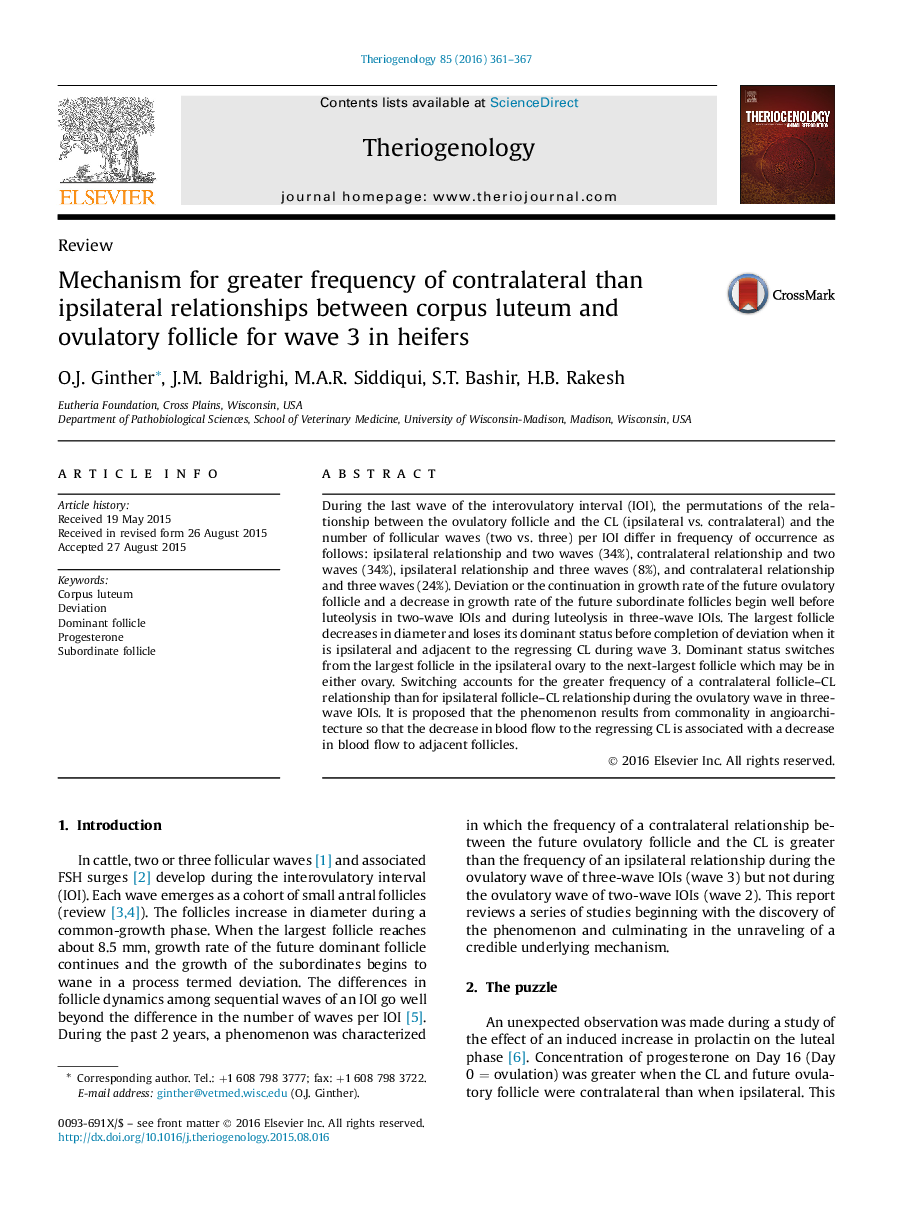| Article ID | Journal | Published Year | Pages | File Type |
|---|---|---|---|---|
| 2095409 | Theriogenology | 2016 | 7 Pages |
During the last wave of the interovulatory interval (IOI), the permutations of the relationship between the ovulatory follicle and the CL (ipsilateral vs. contralateral) and the number of follicular waves (two vs. three) per IOI differ in frequency of occurrence as follows: ipsilateral relationship and two waves (34%), contralateral relationship and two waves (34%), ipsilateral relationship and three waves (8%), and contralateral relationship and three waves (24%). Deviation or the continuation in growth rate of the future ovulatory follicle and a decrease in growth rate of the future subordinate follicles begin well before luteolysis in two-wave IOIs and during luteolysis in three-wave IOIs. The largest follicle decreases in diameter and loses its dominant status before completion of deviation when it is ipsilateral and adjacent to the regressing CL during wave 3. Dominant status switches from the largest follicle in the ipsilateral ovary to the next-largest follicle which may be in either ovary. Switching accounts for the greater frequency of a contralateral follicle–CL relationship than for ipsilateral follicle–CL relationship during the ovulatory wave in three-wave IOIs. It is proposed that the phenomenon results from commonality in angioarchitecture so that the decrease in blood flow to the regressing CL is associated with a decrease in blood flow to adjacent follicles.
